Throughout history, men have managed to tag their names to countless gizmos and gadgets as well as species, medical procedures, landmarks, and doodads, claiming the lion’s share of eponyms for themselves.
An eponym, as you probably guessed, refers to a person after which a particular something is named.
Think Bunsen burner, Douglas fir, Kafkaesque, and, well …
even the word chauvinism. What you probably don’t know is the fact that women are responsible for such momentous advances as windshield wipers, disposable diapers, the first computer language and the Mars Rover. To learn their names, take a hike on over to: women inventors. What I want to know is why Kevlar—the stuff that gave us things like bullet-proof vests—isn’t named Kwolek after its inventor, Stephanic Kwolek? Wait! I can easily guess the answer to that.
But, there are a handful of lassies, among the many unsung she-roes, whose names have lingered long beyond their years, lending a hint of charm and mystery to things we rarely stop to contemplate.
Here are four that are fun to know:
Bloomers:
Those big, billowing trousers traditionally topped with a tight-sleeved jacket and a skirt falling a little below the knee were named for Amelia Jenkins Bloomer, a 19th century American feminist who popularized them in her newspaper for women, The Lily. With her barrel of ink, Bloomer suggested a change in dress standards for women that would be less restrictive in regular activities, and while the amusing attire didn’t last long, the term “bloomers” persists today.
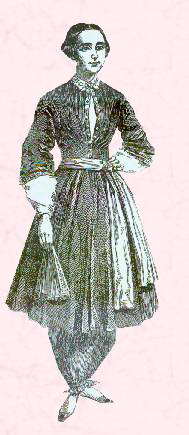
Image of Amelia Bloomer wearing the famous “bloomer” costume, courtesy of Wikimedia Commons
Granny Smith Apple:
Australian farmgirl Maria Ann “Granny” Smith was 69 years old when she discovered a few seedling apple trees growing on her property that had sprouted from a pile of discarded crab apples. Smith hybridized the crab with a domestic variety to create an apple with hard, light green skin and crisp, juicy flesh. Smith died two years later, in 1870, but her prize-winning cooking apples were soon included in the Department of Agriculture’s list of fruits suitable for export, and the rest is history–er–herstory!
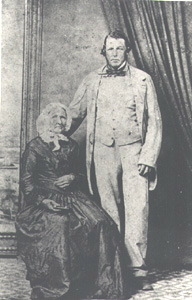
Photo of Maria Ann “Granny” Smith courtesy of Wikimedia Commons
Melba Toast:
The small, dry crisps of thinly sliced toast that we know as “Melba” were not the result of a modern snack marketing scheme. In fact, they were originally created for Dame Nellie Melba, the stage name of Australian opera singer Helen Porter Mitchell. When Mitchell fell ill in 1897, chef Auguste Escoffier crafted the tiny toasts to soothe her stomach.
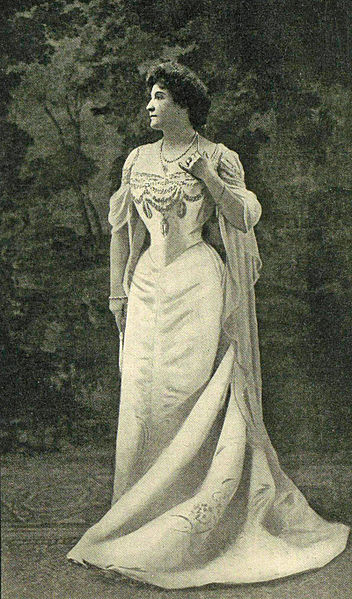
Photograph of Nellie Melba in 1904, published in Illustrated London News on June 25, 1904, courtesy of Wikimedia Commons
Dolly Varden
If you’re a fan of fishing out here in the West, you’ve likely heard tell of the colorful species of trout called Dolly Varden.
She’s a beauty!
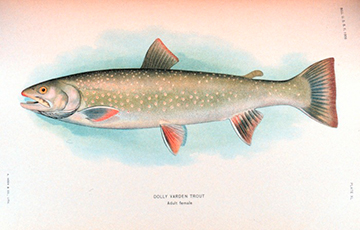
Image of a female Dolly Varden trout courtesy of Wikimedia Commons
But do you know why this fish was dubbed “Dolly”?
It seems that the sublime swimmer inspired some well-read fisherman to name it after the flamboyant calico costume of Ms. Dolly Varden, a character in Dickens’s Barnaby Rudge. In fact, the term “Dolly Varden” can also refer to a flower-patterned fabric, a dress made from such fabric, or a large hat abundantly trimmed with flowers.
A fair fish indeed!
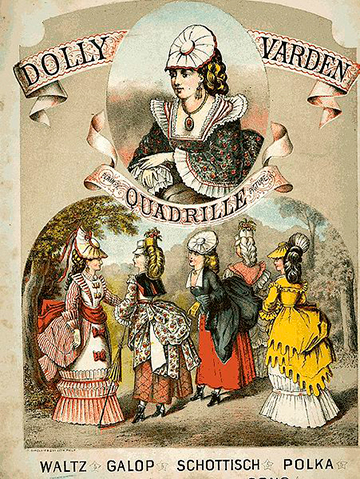
Printed cover for a music sheet for the “Dolly Varden Quadrille” courtesy of Wikimedia Commons





















































Interesting facts. Thanks for the chance to look up these and more!
So interesting!!! And I LOVE the illustrations you have provided! Thank You!
These are so cool! I had no idea about how these everyday items were named. The Granny Smith Apple especially intrigues me because that variety is everywhere and one of the most popular apples available all year long. The illustrations are great as well. Always something fun to learn on RaisinJane!